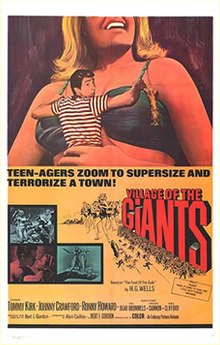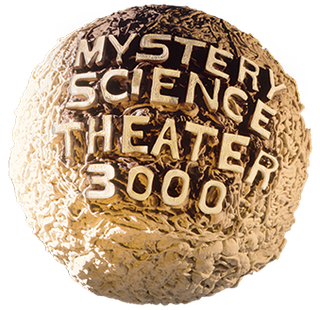
Mystery Science Theater 3000 is an American science fiction comedy film review television series created by Joel Hodgson. The show premiered on KTMA-TV in Minneapolis, Minnesota, on November 24, 1988. It then moved to nationwide broadcast, first on The Comedy Channel/Comedy Central for seven seasons until its cancellation in 1996. Thereafter, it was picked up by The Sci-Fi Channel and aired for three more seasons until another cancellation in August 1999. A 60-episode syndication package titled The Mystery Science Theater Hour was produced in 1993 and broadcast on Comedy Central and syndicated to TV stations in 1995. In 2015, Hodgson led a crowdfunded revival of the series with 14 episodes in its eleventh season, first released on Netflix on April 14, 2017, with another six-episode season following on November 22, 2018. A second successful crowdfunding effort in 2021 produced 13 additional episodes shown on the Gizmoplex, an online platform that Hodgson developed which launched in March 2022. As of 2023, 230 episodes and a feature film have been produced as well as three live tours.

The Beau Brummels was an American rock band. Formed in San Francisco in 1964, the band's original lineup included Sal Valentino, Ron Elliott, Ron Meagher, Declan Mulligan, and John Petersen (drums). They were discovered by local disc jockeys who were looking to sign acts to their new label, Autumn Records, where Sylvester Stewart—later known as Sly Stone—produced the group's early recording sessions. Initially, the band's musical style blended beat music and folk music and typically drew comparisons to the Beatles, while their later work incorporated other music genres such as psychedelic rock and country rock.
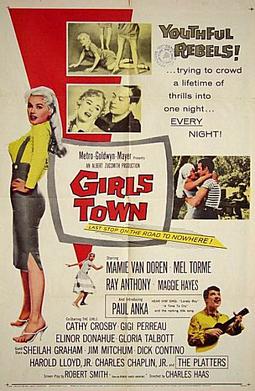
Girls Town is a 1959 American drama film directed by Charles F. Haas and starring Mamie Van Doren, Mel Tormé, and Ray Anthony. Paul Anka also appears in his first acting role. Van Doren stars as a juvenile delinquent who is sent to a girls' school run by nuns, where she finds herself unable to help her sister. The film capitalizes on the 1950s rebellious-teen exploitation films, with catfights, car races, music from Anka and The Platters, and sexy outfits.
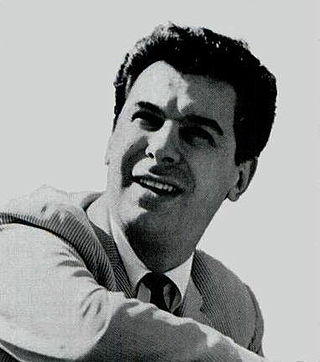
Frederick Anthony Picariello, Jr., better known by his stage name Freddy Cannon, is an American rock and roll singer. His biggest international hits included "Tallahassee Lassie", "Way Down Yonder in New Orleans", and "Palisades Park".

Bedrock is the fictional town, set in the prehistoric time-period, where the characters of the animated television series The Flintstones reside.

The Brain That Wouldn't Die is a 1962 American science fiction horror film directed by Joseph Green and written by Green and Rex Carlton. The film was completed in 1959 under the working title The Black Door but was not theatrically released until May 3, 1962, under its new title as a double feature with Invasion of the Star Creatures.

The beach party film is an American film genre of feature films which were produced and released between 1963 and 1968, created by American International Pictures (AIP), beginning with their surprise hit, Beach Party, in July 1963. With this film, AIP is credited with creating the genre. In addition to the AIP films, several contributions to the genre were produced and released by major and independent studios alike. According to various sources, the genre comprises over 30 films, with the lower-budget AIP films being the most profitable.
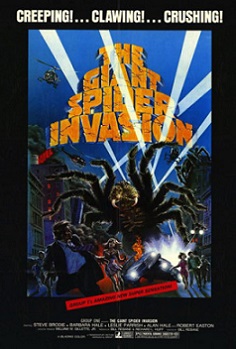
The Giant Spider Invasion is a 1975 science fiction action horror film produced, composed and directed by Bill Rebane, and follows giant spiders that terrorize the town of Merrill, Wisconsin and its surrounding area. The film was theatrically released in 1975 by Group 1 Films and enjoyed a considerable run to become one of the 50 top-grossing films of that year.

Warrior of the Lost World is a 1983 Italian-American post-apocalyptic science fiction film written and directed by David Worth and starring Robert Ginty, Persis Khambatta, and Donald Pleasence. It was created and first released in Italy under the title Il Giustiziere della terra perduta in 1983 during the wide popularity of the Mad Max films, and many subsequently created post-apocalyptic films of the 1980s. Later the film was given another Italian title for VHS and television markets, I predatori dell'anno Omega.

Zombie Nightmare is a 1987 Canadian zombie film produced and directed by Jack Bravman, written by John Fasano, and starring Adam West, Tia Carrere, Jon Mikl Thor, and Shawn Levy. The film centres around a baseball player who is killed by a group of teenagers and is resurrected as a zombie by a Haitian voodoo priestess. The zombie goes on to kill the teens, whose deaths are investigated by the police. The film was shot in the suburbs of Montreal, Canada. It was originally written to star mostly black actors but, at the request of investors, the characters' names were changed to more typically white names. While Bravman was credited as director, Fasano directed the majority of the film. Problems occurred between Fasano and the production crew, who believed him to be assistant director and ignored his directions.

The Giant Gila Monster is an American 1959 science fiction horror film directed by Ray Kellogg and produced by Ken Curtis. This low-budget B-movie starred Don Sullivan, a veteran of several low budget monster and zombie films, and Lisa Simone, the French contestant for the 1957 Miss Universe, as well as comedic actor Shug Fisher and KLIF disc jockey Ken Knox. The effects included a live Mexican beaded lizard filmed on a scaled-down model landscape.

RiffTrax is an American company that produces scripted humorous commentary tracks which are synced to feature films, education shorts, and television episodes. With the talents of former Mystery Science Theater 3000 (MST3K) cast members and writers, RiffTrax also produces several live shows each year which are broadcast to movie theaters. The style of commentating originated from MST3K, their earlier television series, in which they would similarly mock films aloud while watching them. As of September 2023, RiffTrax has riffed 522 feature films, 462 short films, and 16 TV episodes.
Hollywood a Go Go was a Los Angeles–based music variety show that ran in syndication from 1965 to 1966. The show was hosted by Sam Riddle, with music by The Sinners and dancing by The Gazzarri Dancers. It was filmed at the KHJ-TV studios in Los Angeles. Rights to surviving footage of the show are now represented by Retro Video, Inc.

Catalina Caper, also known as Never Steal Anything Wet, is a 1967 comedy musical mystery film starring Tommy Kirk. It blends the beach party format with a standard crime-caper comedy. It was shot on and around Santa Catalina Island, California.
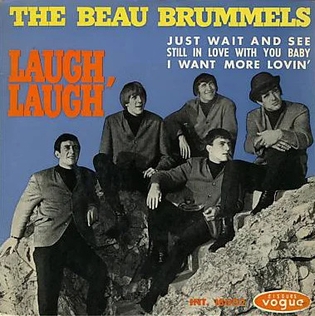
"Laugh, Laugh" is a song by American rock group the Beau Brummels, written by guitarist Ron Elliott and produced by Sylvester Stewart, later known as Sly Stone. Released in December 1964 as the band's debut single, the song reached number 15 on the U.S. Billboard Hot 100 chart the following February. "Laugh, Laugh" was the first hit single to come out of the emerging San Francisco music scene in response to the British Invasion. The song was later included on the band's first full-length album, Introducing the Beau Brummels, released in April 1965.

Sal Valentino is an American rock musician, singer and songwriter, best known as lead singer of The Beau Brummels, subsequently becoming a songwriter as well. The band released a pair of top 20 U.S. hit singles in 1965, "Laugh, Laugh" and "Just a Little". He later fronted another band, Stoneground, which produced three albums in the early 1970s. After reuniting on numerous occasions with the Beau Brummels, Valentino began a solo career, releasing his latest album, Every Now and Then, in 2008.

John Louis Petersen was an American drummer, most notably for rock bands The Beau Brummels and Harpers Bizarre.

Ronald Charles Elliott is an American musician, composer and record producer, best known as songwriter and lead guitarist of the rock band The Beau Brummels. Elliott wrote or co-wrote the band's 1965 U.S. top 20 hits "Laugh, Laugh" and "Just a Little". In addition to reuniting with the Beau Brummels on occasion over the years, Elliott released a solo album in 1970, and has played on and produced albums by a number of other artists.

Ron Meagher is an American musician, best known as the bassist of the rock band The Beau Brummels.

John Declan Mulligan was an Irish-born American musician, best known as a guitarist of rock band The Beau Brummels in the 1960s.
